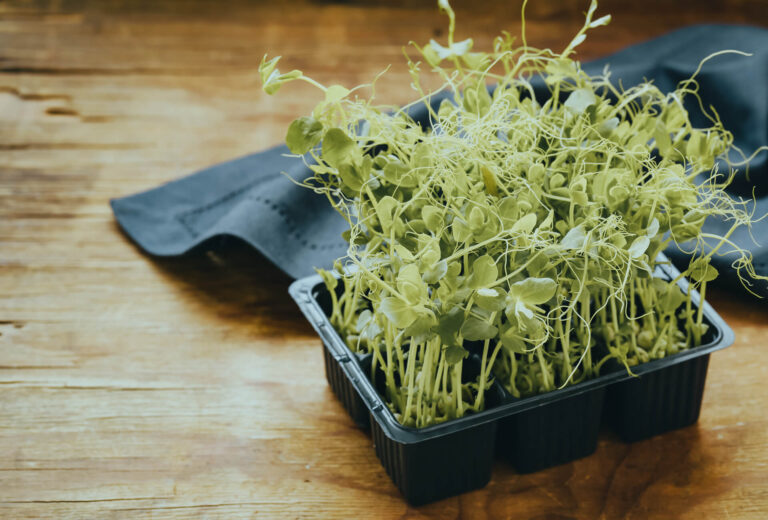Permaculture strategies: how it can help you save water
- Our Sustainable Farm (OSF)

Water: The Elixir Of Life
Everything we do in life revolves around one humble, yet remarkable molecule called H2O. Otherwise known as water, this molecule is essential for all life on Earth. We cook with it, wash with it, drink it, and nourish our crops with it.
Yet, over the past few years, water has become an expensive and increasingly scarce resource for communities all over the globe. For people like farmers, ranchers, and growers, their entire business model depends upon finding affordable sources of water. In fact, reliable irrigation remains one of the leading challenges food producers face today.

With climate change looming on the horizon and other factors contributing to water scarcity, it’s essential for farmers to adopt eco-friendly practices that include water harvesting, reclamation, retention, and conservation.
Thankfully, sustainable farmers all over the world are stepping forward to solve the challenges we face, and they are offering practical solutions which have the power to improve food production and conserve water at the same time.
By following their example, we can learn to reduce our reliance on traditional irrigation methods and create more resilient agricultural systems that require less water. Today let’s learn about how anyone can manage water responsibly by employing sustainable irrigation practices.


Water Management from A Permaculture Perspective
First, let’s define what permaculture is. Permaculture is an ethical design science that subscribes to the idea that human beings are meant to flourish and thrive alongside nature, instead of trying to conquer or war against it.
The word ‘permaculture’ itself, is an umbrella term that describes various disciplines of alternative agriculture, and also takes into account socio-cultural considerations. It mostly focuses on sustainable polyculture and regenerative design, with responsible forms of land, water, and crop management mixed in.
Developed in the 70s, permaculture is the brainchild of Bill Mollison and David Holmgren. These two savvy Australians sought to align human activity with that of naturally occurring and time-tested models, already present within the untamed environments of our planet.
They found that more was accomplished by observing and mirroring processes, patterns, and symbiotic relationships already inherent in nature. From this perspective, regenerative systems are more readily created and endure indefinitely with no exploitation or damage to existing ecological systems.
When we apply permaculture principles to our irrigation practices, we tend to manage water more wisely. In doing so, we help preserve wild ecosystems and reduce our human footprint overall.
In the next few sections, let’s discuss a few strategies to facilitate optimal water management.

Simple Rainwater Harvesting Solutions
Water harvesting refers to the practice of capturing and storing water from rain, snowmelt, or other sources, for later use. In permaculture, water harvesting can be accomplished using a variety of techniques, including:
Any place on your property that has substantial water runoff can be utilized for water capture. The water can be redirected and/or stored for later use.
This process involves capturing rainwater that falls on rooftops and then storing it in cisterns or large storage tanks. This water can then be used for irrigation or other agricultural activities throughout the season.
These raised mounds help capture rainfall and prevent erosion. They are raised ridges of earth and are built along contour lines to slow the flow of water and encourage absorption.
These clever land amendments create long trenches or shallow ditches that run between rows of crops. Swales beautifully capture and store precipitation, allowing it to soak into the soil and recharge the groundwater. In this way, water runoff and wastage are dramatically reduced.
These are large-scale water-harvesting structures that can be used to capture and store water for long periods of time. These larger stores of water can then be used to support livestock.

Creating Microclimates
Did you know that plants contribute to their local climate? It’s true. Large shrubs and trees add a lot of moisture into the air via evapotranspiration. As a result and because of this release of moisture, large masses of vegetation can actually influence and modulate localized climate.
This process is accomplished when plants take up moisture from the ground through their roots, and then release it through their leaves.
You can experience this effect for yourself. During the summer, spend some time under a large tree or in a forest. You’ll likely notice how much cooler the air feels while under the cover of a tree. Every now and again, you may also feel droplets of water on your skin. This moisture is from the tree itself and helps to cool down the surrounding air.
This is yet another reason why it’s so important to maintain native woodlands, plant groves, and create food forests. In other words, the more trees and bushes we collectively grow, the more moisture a region will have. In this way, we can influence weather patterns and proactively curtail desertification.
This restorative practice involves growing different perennial crops together in a natural forest setting, much in the same way plants grow together in the wild. All levels of the forest, from the tall canopy to the more accessible understory, are all fully utilized to produce food, fix nitrogen, facilitate water retention, and optimize soil conditions.
These low-maintenance gardens consist of native plants and support local wildlife. They are usually located on a downhill slope and help prevent erosion. Their main purpose is to catch and store excess water during large rainfall events.
When growing orchard trees, it’s a great idea to also grow native and pollinator-friendly cover crops. This practice will help facilitate water uptake, retention, ground storage, and prevent runoff. On sloped lots, cover crops will also prevent erosion.


Reclaiming Used Water
Water reclamation involves the treatment and reuse of wastewater for the purpose of irrigation or other agricultural purposes. This can be accomplished by using a variety of treatment technologies, including constructed wetlands, biofilters, and sand filters.
Water from household sinks and showers can be captured and repurposed for use in your landscape. In this scenario, it’s important to use non-toxic soaps and detergents in your household.
Water from household toilets can be used to irrigate perennial non-food gardens, located at an appropriate distance from residential structures. Permaculturist Toby Hemenway eloquently discussed this strategy in one of his class lectures.

Water Retention and Conservation
This practice entails using the minimum amount of water necessary to support living systems. With this method, we can create thriving ecosystems, even during times of extreme drought.
By utilizing local, native, and drought-tolerant plants, growers can conserve water.
This method of dispersing water involves using long lines of tubing, and is a great way to conserve water, while at the same time getting just the right amount of it to plants directly where they need it.
Watering plants in the early morning or evening, when temperatures are cooler, ensures that there is less evaporation. Additionally, water at the base of your plants as this prevents powdery mildew and ensures that enough water reaches the roots.
Amended and well fertilized soil holds more water than regular surface soils. This is because healthy soils, full of organic, composted matter like peat moss, branches, and leaves, can retain more water. Therefore, less water is needed, and one can reduce the frequency of irrigation.
This growing method involves covering the soil with a layer of organic material, such as leaves, straw, or wood. Mulch not only protects shallow roots but helps reduce evaporation and locks in moisture. Pebbles and stones can also be used as a surface layer, in smaller garden settings, to reduce moisture loss.
This process involves the decomposition of discarded plant matter and animal fertilizer. The end result is the creation of a nutrient-rich soil amendment which can help improve soil structure and increase its water-holding capacity.

Aligning With Nature Is the Way Forward
In conclusion, by implementing these and other sustainable water management practices, food growers can create more resilient agricultural systems.
By utilizing permaculture principles for the purpose of water conservation, we will be better equipped to adapt to our changing world. The more people align with natural agricultural systems and responsible water management protocols, the faster we will heal our planet.
Responsible irrigation has the power to give farmers and individuals alike, more resource independence. This in turn will enable people to take responsibility for their own regenerative systems apart from centralized corporate interests.
In other words, we can greatly benefit from decentralized food production and regional water allocation. We can diversify our options by making the choice to become more self-reliant. As growers, we need to create our own water resources. In doing so, this trend will put power back into the hands of food growers.
In addition, by adopting these and other water-saving strategies, individuals and communities can protect this vital resource for present and future generations to come.

Rain Gardens are low-maintenance gardens that catch and store excess water during large rainfall events. Drought-Tolerant Cover Crops help facilitate water uptake, retention, ground storage, and prevent runoff. Water reclamation involves the treatment and reuse of wastewater for irrigation or other agricultural purposes. Water Retention and Conservation involves using the minimum amount of water necessary to support living systems. Water at the base of plants is important for preventing powdery mildew and ensuring that enough water reaches the roots.
Amended and well fertilized soil holds more water than regular surface soils, while mulching protects shallow roots and helps reduce evaporation. Composting decomposes plant matter and animal fertilizer to create a nutrient-rich soil amendment. Aligning with nature is the way forward to create more resilient agricultural systems and give farmers and individuals more resource independence. By adopting these and other water-saving strategies, individuals and communities can protect this vital resource for present and future generations.

Summary
Permaculture is an ethical design science that subscribes to the idea that human beings are meant to flourish and thrive alongside nature, instead of trying to conquer or war against it. It focuses on sustainable polyculture and regenerative design, with responsible forms of land, water, and crop management mixed in. It was developed in the 70s by Bill Mollison and David Holmgren, who sought to align human activity with that of naturally occurring and time-tested models. When applied to irrigation practices, permaculture principles tend to manage water more wisely. Water harvesting is the practice of capturing and storing water from rain, snowmelt, or other sources for later use.
It can be accomplished using a variety of techniques, such as runoff/watershed catchment, rooftop catchment, contour bunds, swales, ponds and dams, and micro-climates. Plants contribute to their local climate by taking up moisture from the ground through their roots and then releasing it through their leaves. This is why it is important to maintain native woodlands, plant groves, and create food forests. Agroforestry and Food Forests, Rain Gardens, Drought-Tolerant Cover Crops, Reclaiming Used Water, Water Retention and Conservation, Drought-Tolerant Plants, Drip Irrigation, and Optimal Irrigation Times are all practices that can help reduce desertification. Agroforestry and Food Forests involve growing different perennial crops together in a natural forest setting to produce food, fix nitrogen, facilitate water retention, and optimize soil conditions.








